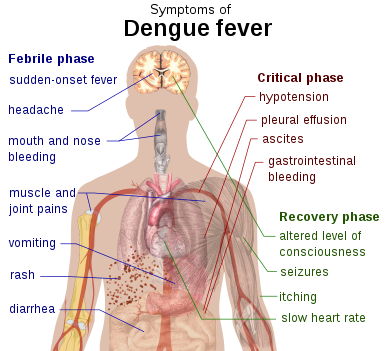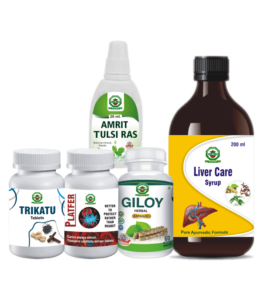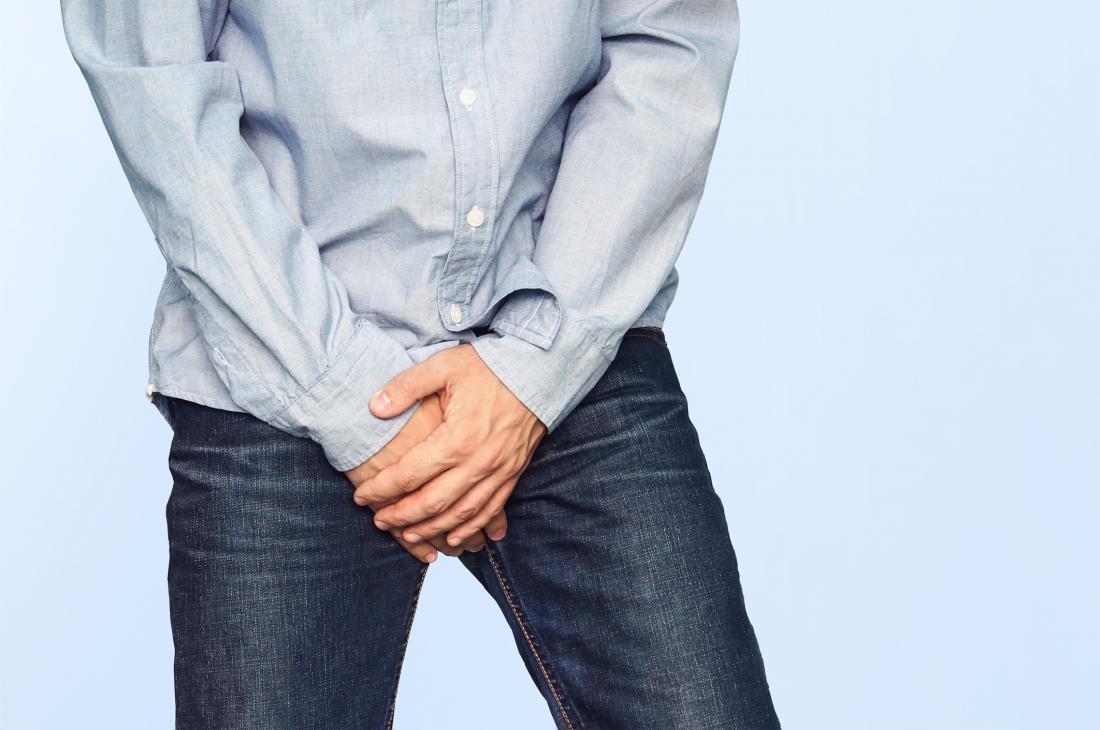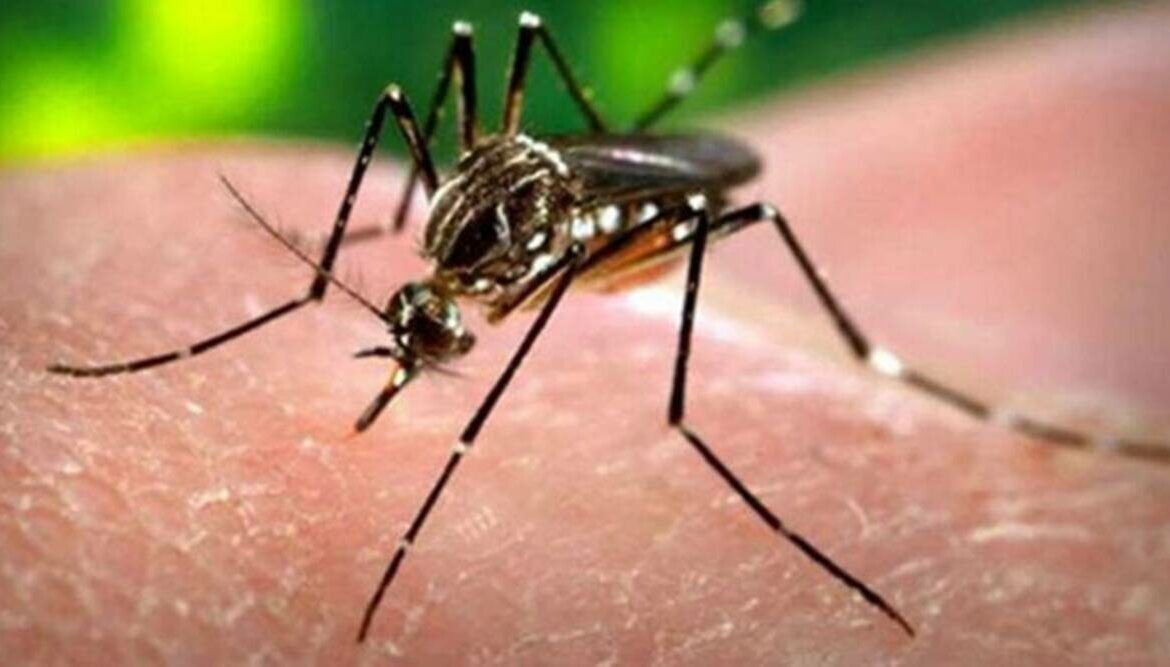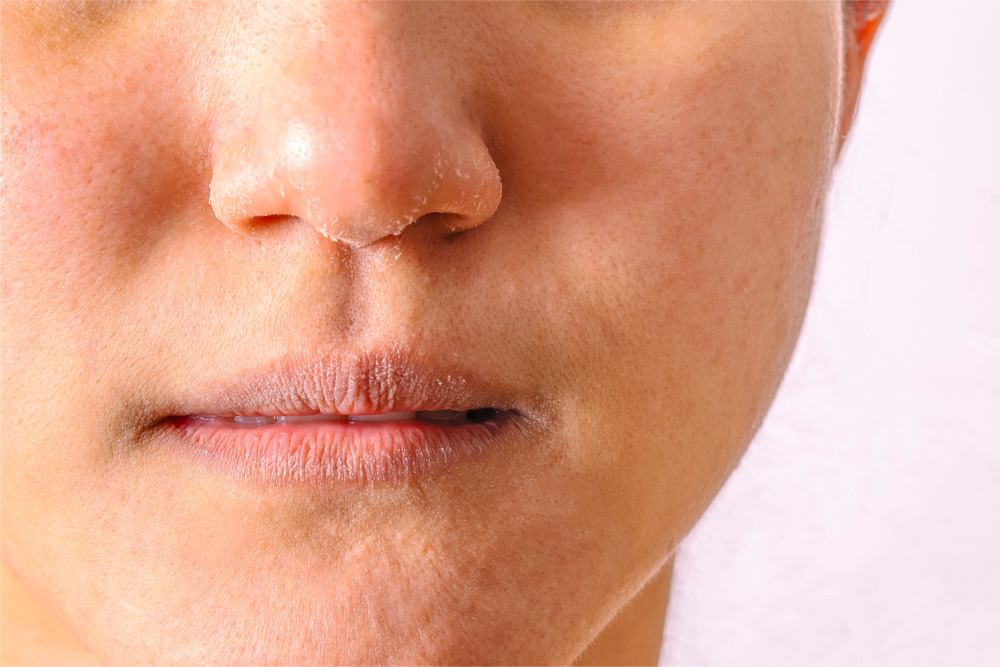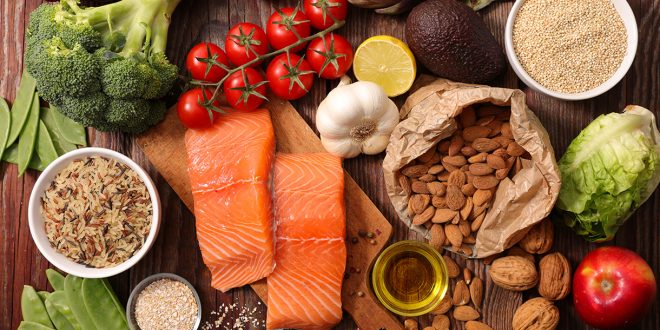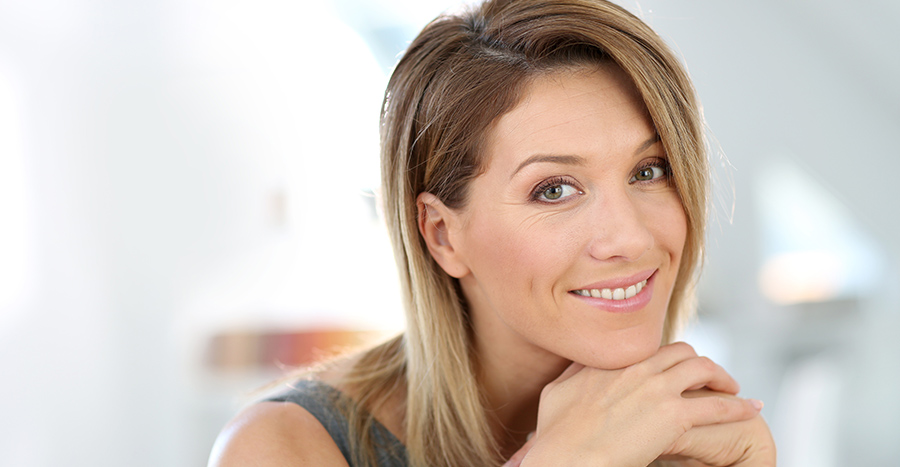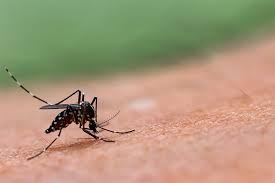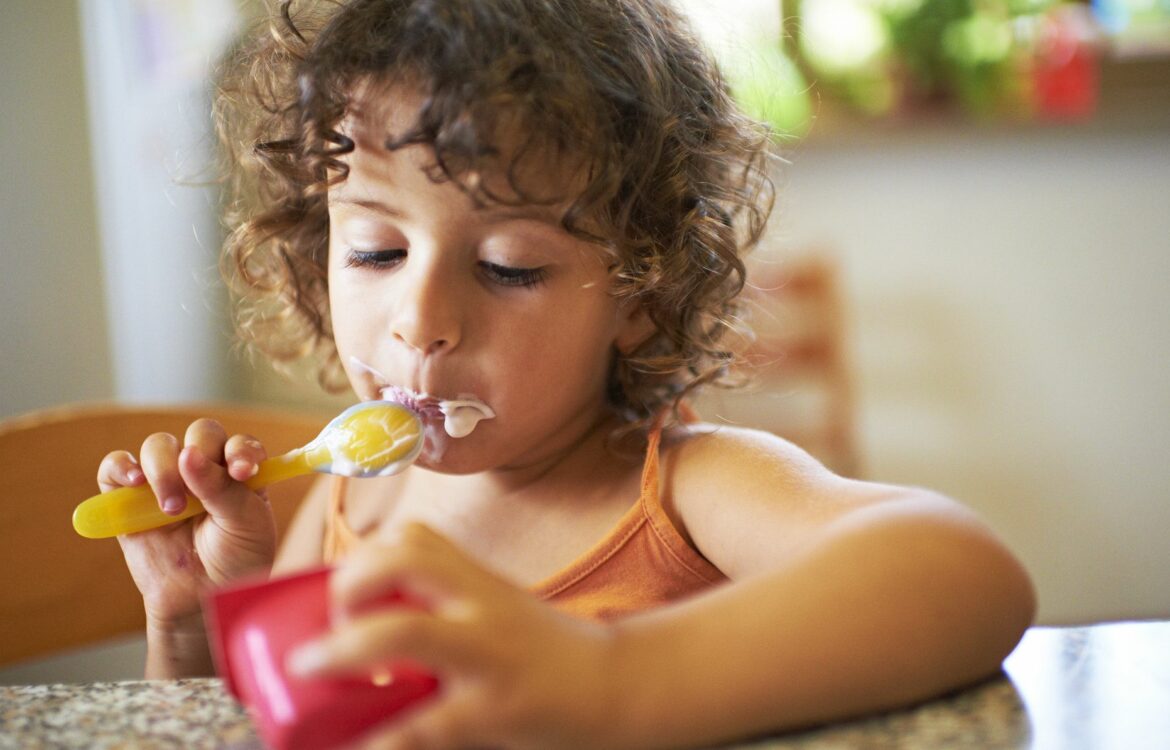Author Archives: Dr. Vaidya Karanvir Singh
FOOD AND NUTRITION GUIDLINES FOR HEALTHY KIDS
- December 3, 2021
- Posted by Dr. Vaidya Karanvir Singh
- 0 Comment(s)
Nutrition for kids is based on the same principles as nutrition for adults. Everyone needs the same types of nutrients — such as vitamins, minerals, carbohydrates, protein and fat. Children, however, need different amounts of specific nutrients at different ages.
So what’s the best formula to fuel your child’s growth and development.
Consider these nutrient-dense foods:
- Protein. Choose seafood, lean meat and poultry, eggs, beans, peas, soy products, and unsalted nuts and seeds.
- Fruits. Encourage your child to eat a variety of fresh, canned, frozen or dried fruits — rather than fruit juice. If your child drinks juice, make sure it’s 100 percent juice without added sugars and limit his or her servings. Look for canned fruit that says it’s light or packed in its own juice, meaning it’s low in added sugar. Keep in mind that one-quarter cup of dried fruit counts as one cup-equivalent of fruit. When consumed in excess, dried fruits can contribute extra calories.
- Vegetables. Serve a variety of fresh, canned, frozen or dried vegetables. Aim to provide a variety of vegetables, including dark green, red and orange, beans and peas, starchy and others, each week. When selecting canned or frozen vegetables, look for options lower in sodium.
- Grains. Choose whole grains, such as whole-wheat bread, oatmeal, popcorn, quinoa, or brown or wild rice. Limit refined grains such as white bread, pasta and rice.
- Dairy. Encourage your child to eat and drink fat-free or low-fat dairy products, such as milk, yogurt, cheese or fortified soy beverages.
AYURVEDIC DIET AND HEALTHY FOOD– Whoever thinks that Ayurveda is only for adults have completely got that wrong. Ayurveda is an age-old medical science that can support the growth, development and health of your young ones without any side effects.
As every mother knows, no two children are alike. So, it is essential to understand the needs of each child – emotional, physiological, and psychological nourishment – to know about the child’s constitution and imbalances. According to Ayurveda, there are three main Ayurvedic mind-body types or mind-body principles which are Vata, Pitta, and Kapha. The balance in the child’s mind and body is based on the proper balance of these three doshas. To understand the doshas better,
- Vata – Vata is the source of communication and intelligence. Vata governs your child’s nervous impulses, creativity or elimination.
- Pitta – Pitta governs metabolism, digestion processes, and endocrine processes.
- Kapha – Kapha governs structure, cohesion, and mass.
Of course, most children won’t fall so directly into these three categories. The combination of these three doshas can be unique for each child. Once you know your child’s prakriti or constitution through a consultation with an Ayurvedic physician, you will know the health problems your child may be prone to, plan their daily routine and diet they require to prevent illnesses.
Ayurvedic Diet For Children-
The goal of all nutrition is to give our body the nourishment and energy required. The main goal here is to ensure the thorough digestion of the food consumed. Here according to Ayurveda, the digestive fire, Agni, comes into play only when the food taken is burnt properly, and there is minimal production of waste material, Ama. According to Ayurveda, this not only provides for a healthy and wholesome diet but also builds the basis for good physical and mental performance, and prevents everyday aches and pains and other illnesses.
Here are a few recommendations by our expert Ayurvedic physicians to keep in mind while planning healthy food for kids:
Every meal should include 6 tastes – sweet, sour, salty, spicy, bitter, astringent. This can stimulate all the 6 senses which have different effects on a person’s body and mind.
- Prepare and consume your meals as fresh as possible.
- Ensure your child drinks warm water with meals. It makes the digestive tract stronger while a cold drink weakens it.
- For breakfast, Ayurveda suggests something warm along with a glass of milk.
- Ayurveda suggests using cow’s milk because to prevent children from any deficiency that can lead to growth and developmental disorders.
- For lunch, Ayurveda suggests the intake of homemade yogurt along with a well-balanced lunch spread.
- For dinner, Ayurveda prefers light, easily digestible meals. Try to avoid animal proteins that are difficult to digest during the night.
- All types of junk food or canned, frozen, or packaged foods should be avoided.
- Include sattvic (pure) foods in your child’s diet. They include cow’s milk, ghee, yogurt, paneer, rice, whole grains, healthy sweeteners such as jaggery and honey, whole seeds and nuts, and organic fruits and vegetables.
- Include small pinches of spices such as turmeric, cumin, and pepper. It can help in digestion, metabolism, and brain nourishment.
In addition to the general information about Ayurvedic nutrition, changes can be brought into this diet depending on your child’s body constitution. This can be identified with the help of an Ayurvedic physician. Then, gently start with individual steps and calmly find your own way to make you and your child.
AYURVEDIC HERBS FOR HEALTHY KIDS-
CURCUMIN -(CURCUMA LONGA)
Curcumin is loaded with antioxidants and antimicrobial activities. It is also known as turmeric (haldi) and has strong immunomodulatory (the ability to moderate immune cell activity) action. Giving a cup of turmeric milk will boost your child’s immunity and keep them away from catching frequent flu and cold.
AMLA OR INDIAN GOOSEBERRY-
Amla is a rich source of vitamin C and dietary fibers. Vitamin C is known to support the functions of your child’s digestive and immune system.
ZINGER(ZINGIBER OFFICINALE)-
Due to weak immunity, children are more prone to seasonal flu (characterized by a sudden onset of fever, dry cough, headache, muscle, and joint pain), or cold. Ginger is the best and safest remedy for its prevention as well as treatment at home. Ginger has powerful antiviral and antibacterial properties that help in strengthening your child’s immunity.
HERBAL SUPPLEMENTS FOR HEALTHY KIDS-
These supplements can have strong effects on the body. However, they are not regulated by the Food and Drug Administration (FDA). They are available in many forms, including in tea bags, capsules, tablets, liquids, and powders. Examples of common herbal health products and supplements include black cohosh,giloy, garlic, ginkgo, zinger, Amla etc.
BENIFITS OF HERBAL SUPPLEMENTS-
- Helps to restore the normal physiological functions of the digestive tract which maintains overall health of your baby.
- Relieves smooth muscle spasms associated with colic pain. Safe and effective for fast relief of colic pain and flatulence in infants and children.
- Exerts antibacterial activity – combats acute and chronic infections
- Very effective treatment of common digestive complaints in infants and children
- Promotes proper digestion and promote healthy growth as a daily health supplement.
- Not known to have any side effects.
- Very pleasant taste and hence acceptable to even fastidious infants and children.
DENGUE FEVER
- December 3, 2021
- Posted by Dr. Vaidya Karanvir Singh
- 0 Comment(s)
DESCRIPTION
Dengue is mosquito-borne tropical and subtropical world disease. It is caused by one of four closely related dengue virus serotypes DENVs. It is primarily transmitted to humans by the female Aedes mosquito. These mosquitoes spread Zika, chikungunya, viruses also. Dengue fever has occurred due to:
- Rapid urbanization,
- Increase in international travel,
- Lack of effective mosquito control measures,
- Globalization.
CAUSES
- Dengue fever develops after a bite from a female aedes mosquito.
- Mosquito acquires virus by biting people who is already infected with dengue and then transmits it to another people by biting.
- From person to person it does not spread directly.
PATHOPHYSIOLOGY OF DENGUE FEVER
 SYMPTOMS OF DENGUE FEVER
SYMPTOMS OF DENGUE FEVER
Dengue symptoms usually begin 4 to 6 days after infection and last for up to 10 days.
Symptoms may include:
- High fever 104 F with following signs and symptoms:
- Headache
- Muscle, bone or joint pain
- Nausea
- Vomiting
- Pain behind the eyes
- Swollen glands
- Rash
Warning signs of severe dengue fever usually begin the first day or two after fever goes away, and may include:
- Severe stomach pain
- Persistent vomiting
- Bleeding from gums or nose
- Blood in urine, stools or vomit
- Bruising
- Difficulty in breathing or rapid breathing
- Fatigue
- Irritability or restlessness
WAYS TO PREVENT DENGUE FEVER
preventing mosquito bites is the way to prevented dengue. People who traveling to the high-risk areas should use preventive measures to avoid being bitten.
Cover Yourself
- Reduce skin exposure by wearing long pants, long sleeves shirts, and socks.
- Wear a full brimmed hat that cover the head and neck.
- Covering the body with clothes lessens area where mosquito can bite.
Mosquito Repellents
- Mosquito repellents containing at least 10 percent of diethyltoluamide provide protection against mosquitoes bites.
- They should not be used for young children as it can lead to a serious effect on them such as seizures.
- Mosquito Traps and Nets best for the infants because repellent creams or lotions cause allergy to them.
- Nets treated with insecticides are effective ones as they can repel the insects from entering the room.
- Keep the Windows and the Doors Shut can restrict mosquito entry.
Avoid Water Stagnate
- The Aedes mosquito breed in stagnant water, better to removing the stagnant water can reduce the risk of dengue fever.
CAC TREATMENT FOR DENGUE
Dengue Fever Kit
- Platfer Tablet – Platfer Tablet Boosts platelet count and reverse the thrombocytopenia (low platelet count) associated with dengue. It decreases the peripheral platelet destruction and strengthens the host immune system. Platfer tablets also helps reduce fever (antipyretic property) and protect the liver (hepatoprotective property). This herbal combination is prepared from herbs like Papaya (Carica papaya) and Giloy (Tinospora cordifolia) which increases the platelet counts naturally. It provides good and effective results for patients. It increases the physical and mental strength of a person and builds up immunity.
Recommended Dosage – Take 1 tablet twice a day with normal water.
- Giloy Capsules – As the name suggested “Giloy” is the main ingredient of this medicine. It is a potent immuno-modulator herb. It is beneficial for improving the immunity and prevents from common infections. These tablets provide palliative treatment in fever. The vati reduces Kapha dosha, pacifies Vata and detoxifies the Pitta dosha. It is beneficial in general weakness, recurrent infections, periodic fever syndrome, etc.
Recommended Dosage – Take 2 capsules twice a day with normal water.
- Amrit Tulsi Ras – This herbal preparation is in drops form prepared from five types of Tulsi. Shama Tulsi (Ocimum sanctum), Rama Tulsi (Ocimum gratissimum), Kapoor Tulsi (Ocimum canum), Shwet Tulsi (Ocimum basilicum), Nimba Tulsi (Ocimum citriodorum) that provides good result in all allergic reactions.
Recommended Dosage – Take two to three drops twice daily.
- Liver care Syrup – Liver Care syrup helps in balancing Pitta dosha. This Syrup enhances regeneration of liver cells, promote functions of liver, and improve blood flow from the liver. It helps in the treatment of fatty liver, liver cirrhosis, Hepatitis, hepatomegaly, and obstructive Jaundice. CAC Liver Care syrup contains Ingredients like Kalmegh (Andrographis paniculata), Kutaki(Picrorhiza kurroa), Bhumi amla( phyllanthus niruri), Giloy(Tinopora Cordifolia), Yavakshar( Hordeum vulgare), Imli Kshar( Tamarindus indica), Mukta Shukta pisti etc. These herbs shows Antioxidant, anti-inflammatory, Hepato-protective, properties. This syrup improves digestion, enhances appetite.
Recommended Dosage – Take 2 teaspoonful twice daily.
- Trikatu Tablet – Trikatu Tablet is a hebo-mineral tablet of 650 MG and is purely Ayurvedic formulation. CAC Trikatu Tablet helps to eliminate excess Kapha or mucous from the body, supports respiratory system, manages weight, helps to take out impurities or ama from the body, supports healthy detoxification, reduces swelling. It shows anti-inflammatory, analgesic, expectorant, antioxidant properties. This tablet is made up of equal parts of three herbs such as Pippali (Piper longum), Shunthi (Zingiber officinale), & Marich (Piper nigrum) that maintains the metabolism in the body. The regular use of this tablet balances the thyroxin hormone and treats hyperthyroidism naturally. It is an Appetizer and it improves digestion, supports normal gastric function, and normal circulation.
Recommended Dosage – Take 2 tablets twice a day with normal water.
HYDROCELE
- December 3, 2021
- Posted by Dr. Vaidya Karanvir Singh
- 0 Comment(s)
HYDROCELE
Hydrocele is a problem that occurs in the testicles of men, in which fluid or water collects around the testicle. Due to hydrocele, pain in the testicles also starts. When the testicle fills with water, the size of the testicle also increases. Filling of water in the testicles can also prove to be fatal, if its symptoms are not recognized and treated on time. When the water gets filled too much, the testicles can also burst, this can also lead to the death of the victim. This problem can occur in men at any age. Hydrocele is very common in children.
CAUSES OF HYDROCELE
- Birth problem or any disorder
- Hydrocele due to inguinal hernia
- Fluid build-up near the testicles
- Swelling and bruising
- Any type of infection in the testicle
SYMPTOMS
- Pain in the testicles – This is the main symptom of hydrocele, in which there is sudden pain in the testicle of a man. Many times this pain subsides by drinking water or taking other measures, but after some time this pain starts again and in that case the man needs to take pain-relieving medicine
- Swelling of the testicles – Another symptom of hydrocele is swelling of the testicles. In this condition the size of the testicles of the male increases.
- Difficulty in walking – If a person has difficulty in walking, then he should immediately contact the doctor as it can be a sign of hydrocele.
- Difficulty in sitting – When the problem of hydrocele increases a lot, then the man also has difficulty in sitting.
- Enlargement of the testicles – Many times it has been seen that the size of the testicles of a man suffering from hydrocele increases, this is mainly due to swelling in the testicles.
TYPES OF HYDROCELE
- Communicating Hydrocele – It has an opening called the circulatory system in the abdominal cavity. That opening allows abdominal fluid to flow through the scrotum. If the incision is not treated and does not go away on its own, it becomes an inguinal hernia.
- Non-Communicating Hydrocele – A non-communicating hydrocele is painless and less severe than the other. The fluid is absorbed in about 1 or 2 years.
CAN HYDROCELE GO AWAY ON ITS OWN
Although there are no medications involved in the treatment of hydrocele, it can be treated using some other methods such as surgery. However, in the case of infants, such a condition may get better on its own without any treatment. This usually happens when the baby is 6 to 12 months old. If in any case, when it heals on its own, a surgery is preferred for the treatment which is much preferred to avoid further complications.
HOW ARE HYDROCELES DIAGNOSED?
To diagnose hydrocele, the doctor performs some physical tests:
- The tenderness of the scrotum will be checked by the doctor.
- To check for hernia, pressure is applied to the abdomen and scrotum.
- If a hydrocele is diagnosed, the testicle is surrounded by a transparent fluid.
- Blood and urine tests also help determine infection in children.
- Ultrasound also helps to rule out hernia, scrotal swelling, and testicular tumors.
WHAT HAPPENS IF HYDROCELE IS NOT TREATED?
There are basically two types of hydrocele i.e. non communicating and communicating. The non-communicable type is usually less harmful because its size does not increase and remains almost constant. On the other hand, the circulatory type hydrocele is more harmful and can lead to serious complications like inguinal hernia if left untreated.
HOW TO PREVENT HYDROCELE?
In men, hydrocele is a common health problem with swelling in the scrotum. It is usually more common in infants than in adults. There is no way to prevent this condition in infants, although it is possible to do so in adults.This can be prevented by protecting the scrotum and testicles from any risk of injury. When performing in contact sports, certain protective measures such as athletic cups may be used.
HOW TO TREAT HYDROCELE WITHOUT SURGERY?
Hydrocele is one of the most prevalent diseases in babies. It persists for a year but eventually goes away. But it can come back later in life at any age. If it doesn’t get better on its own, you may need to have surgery. Apart from surgery, these things can also be done to get rid of it –
- Fruit Fast – It helps in flushing out the toxins from the body. Eating fresh fruits for eight days can help the hydrocele to heal. Instead of eating fruits, you should consume fruits like smoothies or juices.
- Healthy living – Although fruit fasting can make you feel tired, exercising will keep you active. The stress level is also reduced by doing meditation and it can be cured without surgery.
- Avoiding Constipation – Constipation is not good for this. The stress of constipation actually makes your scrotal swelling worse. Things like alcohol, caffeine and tobacco should be avoided.
CAC RASAYAN VATI
- December 3, 2021
- Posted by Dr. Vaidya Karanvir Singh
- 0 Comment(s)
DESCRIPTION
Rasayan vati is herbo-mineral ayurvedic formulation, which is 100% natural. Rasayan vati contains various herbs such as Aswagandha, Shilajeet, Amla, Kesar, Musali, Shatavar, Brahmi Abhrak Bhasam, Swarn Makshik Bhasam, Yashad Bhasam, Mukta pisti, Praval pisti, Jaiphal, Vang Bhasam, Dalchini, Javitri, Gokhru, Kaunch Beej, Saunth, Mirch, Pipli, Amla, Kesar, Manjith, Anant Mool, Brahmi, Musali, Swarn Vang, etc. These ingredients show antioxidant, aphrodisiac, anti-inflammatory, antipyretic, analgesic, immuno-modulator properties. These tablets provide good results in General debility, Psychological disorders, and improves immunity.
USES OF RASAYAN VATI
- General debility
- Sexual disorders
- Improves immunity
- Psychological disorders
- Allergy
- Amenorrhoea
- Ankylosis spondylitis
- Cervical pain
- Dementia
- Depression
- Epilepsy
- Fibromyalgia
- Gout
- Osteoarthritis
- Pulmonary arterial hypertension
- Schizophrenia
- Scleroderma
- Tinnitus
INGRIDENTS
- Guduchi satav (Tinospora cordifolia) ———————-162.5 mg
- Shilajeet shuddha (Asphaltum) —————————–162.5 mg
- Abhark bhasam ————————————————-162.5 mg
- Hinguleshwar rasa ———————————————162.5 mg
DOSAGE – Take 1 tablet twice daily.
INGRIDENTS DESCRIPTION
- Guduchi Satav – this is magical powder hails immense health benefits towards rectifying all sorts of Pitta aggravating disorders like indigestion, constipation, burning sensation of hands and feet, fever, gout, fatigue, jaundice, diabetes, liver problems, general debility etc. Being an exceptional rejuvenate herb, giloy helps in boosting the body’s immunity. The antioxidant and anti-microbial properties of giloy flush out the AMA toxins from the body and shields the body from various microbial diseases. It also improves liver and kidney functioning and treats urinary tract infection.
- Shilajeet shuddha – Shilajit contains fulvic acid it offers numerous health benefits. It can function as an antioxidant to improve your body’s immunity and memory, an anti-inflammatory, an energy booster, and a diuretic to remove excess fluid from your body. Fulvic acid present in Shilajit helps in blood formation and enhances the oxygen-carrying capacity of the blood. Thus, it helps prevent hypoxia.
- Abhark bhasam – Abhrak is a powerful mineral compound which comprises of minerals such as silicon, iron, calcium, magnesium, and potassium. It also contains aluminum, sodium, titanium, cholrine and phosphorus in traces. Abhrak Bhasma is extremely beneficial for treating different types of psychotic problems like depression, dementia, etc. It stabilizes the Vata and Pitta doshas within the body which in turn keeps the serotonin level under control and helps to reduce anxiety. Anti-inflammatory and purgative properties of abhrak bhasma actively help to suppress the toxic bacteria Helicobacter pylori and also prevents it from growing in the gut.
ABOUT PRODUCT
Chandigarh Ayurved Centre products are 100% safe and natural. MADE IN INDIA.
- Under the guidance of the MD Ayurveda expert, this product is formulated.
- Natural and herbal products for overall health.
- Free from preservatives and chemicals.
- 131 years of serving mankind through Ayurveda.
- Serving society 4th Generation in Ayurveda.
CAC RASAYAN VATI
CHICKUNGUNYA
- December 3, 2021
- Posted by Dr. Vaidya Karanvir Singh
- 0 Comment(s)
DESCRIPTION
- Chikungunya is a viral disease.
- Transmitted by Aedes mosquitoes to humans.
- The word ‘Chikungunya’ means bends up.
- Mostly occurred in countries Africa, Europe, Asia, and the Indian and Pacific Oceans.
- Chikungunya virus was first time found in the Americas on islands.
- There is no vaccine or medicines to prevent or treat Chikungunya virus infection.
- Treatment is focused on relieving the disease symptoms.
- Chikungunya is not transmitted from one person to another because virus needs a vector (mosquitoes) to spread infection.
- People who traveling in the countries with chikungunya virus can protect themselves by preventing mosquito bites, use insect repellent, wear long sleeves and pants, and stay in places with air conditioning window and door screens.
- The disease have some clinical signs with dengue and Zika.
TRANSMISSION
- Chikungunya virus is transmitted between humans via mosquitoes.
- When uninfected mosquito feeds upon someone who has the virus circulating in their blood, the mosquito can pick up the virus as it ingests the blood.
- The virus then replicate in the mosquito, before it can then be transmitted to a new native host.
- The virus again replicate in newly infected person and amplify to high concentrations.
- The virus mainly replicates in the mosquito midgut then disseminates salivary glands.
- Laboratory tests show virus can be detected in saliva 2-3 days after the blood meal.
- The complete transmission cycle from human to mosquito, and back to humans can occur in a week.
- The mosquitoes involved in the transmission of chikungunya are Aedes aegypti and Aedes albopictus.
- Both species also transmit other mosquito-borne disease such as dengue and Zika fever viruses.
SYMPTOMS
- Symptoms usually begin 3–7 days after infected mosquito bites to people.
- Fever
- Joint pain.
Other symptoms include - Headache,
- Pain in Muscle,
- Swelling on Joints,
- Body Rash
- Chikungunya does not cause death, but the symptoms can be severe and disabling.
- Most patients feel better within a week or in some the joint pain persist for some period.
- People at risk for severe disease include newborns, older adults, and people with medical conditions such as high blood pressure, diabetes, or heart disease.
- Once a person has been infected from infection stay protected from future infections.
COMPLICATIONS OF CHIKUNGUNYA
Complications can include:
- Retinitis – inflammation of the retina.
- Myocarditis – inflammation of the heart muscle.
- Hepatitis – inflammation of the liver.
- Nephritis – inflammation of the kidneys.
- Hemorrhage – bleeding.
- Meningoencephalitis – inflammation in the brain membrane and adjoining cerebral tissue.
- Myelitis – inflammation of the spinal cord.
- Guillain-Barré syndrome – rare peripheral nervous system disease which is characterized by muscle weakness.
- Cranial nerve palsies – loss of cranial nerves functions.
TREATMENT
1. There is no vaccine or medicine to treat or prevent chikungunya virus.
Treat the symptoms:
- Get plenty of rest.
- Drink fluids to prevent dehydration.
- Take medicine such as acetaminophen or paracetamol to reduce fever and pain.
- Do not take aspirin and other non-steroidal anti-inflammatory drugs
2. If people chickungunya, prevent mosquito bites for the first week of illness.
- During the first week of infection, chikungunya virus can be found in an infected person’s blood and passed from that person to a mosquito through mosquito bites.
- An infected mosquito can then spread the virus to other people.
CAC TREATMENT FOR CHIKUNGUNYA
- Platfer Tablet – Platfer Tablet Boosts platelet count and reverse the thrombocytopenia (low platelet count) associated with dengue. It decreases the peripheral platelet destruction and strengthens the host immune system. Platfer tablets also helps reduce fever (antipyretic property) and protect the liver (hepatoprotective property). This herbal combination is prepared from herbs like Papaya (Carica papaya) and Giloy (Tinospora cordifolia) which increases the platelet counts naturally. It provides good and effective results for patients. It increases the physical and mental strength of a person and builds up immunity.
Recommended Dosage – Take 1 tablet twice a day with normal water.
- Giloy Capsules – As the name suggested “Giloy” is the main ingredient of this medicine. It is a potent immuno-modulator herb. It is beneficial for improving the immunity and prevents from common infections. These tablets provide palliative treatment in fever. The vati reduces Kapha dosha, pacifies Vata and detoxifies the Pitta dosha. It is beneficial in general weakness, recurrent infections, periodic fever syndrome, etc.
Recommended Dosage – Take 2 capsules twice a day with normal water.
- Amrit Tulsi Ras – This herbal preparation is in drops form prepared from five types of Tulsi. Shama Tulsi (Ocimum sanctum), Rama Tulsi (Ocimum gratissimum), Kapoor Tulsi (Ocimum canum), Shwet Tulsi (Ocimum basilicum), Nimba Tulsi (Ocimum citriodorum) that provides good result in all allergic reactions.
Recommended Dosage – Take two to three drops twice daily.
- Liver care Syrup – Liver Care syrup helps in balancing Pitta dosha. This Syrup enhances regeneration of liver cells, promote functions of liver, and improve blood flow from the liver. It helps in the treatment of fatty liver, liver cirrhosis, Hepatitis, hepatomegaly, and obstructive Jaundice. CAC Liver Care syrup contains Ingredients like Kalmegh (Andrographis paniculata), Kutaki(Picrorhiza kurroa), Bhumi amla( phyllanthus niruri), Giloy(Tinopora Cordifolia), Yavakshar( Hordeum vulgare), Imli Kshar( Tamarindus indica), Mukta Shukta pisti etc. These herbs shows Antioxidant, anti-inflammatory, Hepato-protective, properties. This syrup improves digestion, enhances appetite.
Recommended Dosage -Take 2 teaspoonful twice daily.
- Trikatu Tablet – Trikatu Tablet is a hebo-mineral tablet of 650 MG and is purely Ayurvedic formulation. CAC Trikatu Tablet helps to eliminate excess Kapha or mucous from the body, supports respiratory system, manages weight, helps to take out impurities or ama from the body, supports healthy detoxification, reduces swelling. It shows anti-inflammatory, analgesic, expectorant, antioxidant properties. This tablet is made up of equal parts of three herbs such as Pippali (Piper longum), Shunthi (Zingiber officinale), & Marich (Piper nigrum) that maintains the metabolism in the body. The regular use of this tablet balances the thyroxine hormone and treats hyperthyroidism naturally. It is an Appetizer and it improves digestion, supports normal gastric function, and normal circulation.
Recommended Dosage – Take 2 tablets twice a day with normal water.
HOME REMEDIES FOR DRY SKIN
- December 3, 2021
- Posted by Dr. Vaidya Karanvir Singh
- 0 Comment(s)
CAUSES
- Dry skin on face becomes even drier during winter season in which it needs extra care. Sometimes the skin is not dry naturally while it becomes dry due to other reasons. For example, the soap or cleanser used to clean the skin has a direct effect on the skin, if harsh soap is used, then the harmful ingredients present in it eliminate the moisture and make the skin drier
- The harmful UV rays of the sun damage the skin as well as make the skin dry if more exposure to sun. These UV rays penetrate the inner surface of the skin and create obstruction in the formation of collagen and as a result the skin starts drying.
- If you are suffering from any disease for a long time, you are taking various types of allopathic medicines, then its harmful effects will also be visible on your skin.
- Always bath with hot water keeps skin dry. When the skin comes in contact with hot water, the epidermis ie the first layer of the skin is also affected due to which the skin becomes dry.
- The skin also remains dry due to suffering from a disease called hypothyroidism. In this problem, the thyroid or thyroid gland produces a small amount of thyroid, due to which the sweat glands located in the skin are affected and there is a lack of moisture in the skin.
- Swimming in the swimming pool for a long time causes the skin to lose its moisture. This water contains chlorine and when it comes in contact with the skin, the moisture content of the skin starts decreasing.
- Age can also be the reasons for dry skin because with ageing, the production of collagen in the skin starts decreasing and as a result the skin becomes dry.
REMEDIES
FACE MASSAGE
You can massage your face with curd. Yogurt has anti-bacterial, anti-inflammatory properties. Yogurt helps to retaining the natural moisture of the skin. Using curd also removes the dark spots and blackness of the face. For soft and glowing skin, you must use curd at least 4 times a week. After massaging it on the face for 10 minutes, clean the face with lukewarm water, the dryness of your skin will start to go away.
HONEY
Honey is rich in anti-oxidant properties. Honey is very helpful in moisturizing the skin. Honey deeply cleanses your skin, retaining its natural moisture. Apply honey on the face and massage the face for 10 minutes. After that clean it with fresh water. Honey will reduce the dryness of the face.
Exfoliate
It is very important to exfoliate the skin. People must exfoliate the skin thoroughly 2 to 3 times a week. Due to this the dead skin of the face is removed and the face becomes clean.
Aloe vera
According to a 2003 study, aloe vera gel provides relief from dry skin. People who have dry skin on their hands or feet can apply aloe vera gel and cover that area with socks or gloves. It would be better if this gel should be applied before sleeping at night. Aloe vera gel is beneficial for the skin in other parts of the body as well.
Sunflower oil
A survey conducted in 2013 found that sunflower seed oil, ie sunflower oil, acts as a very effective moisturizer when used on the arms. The same study found that olive oil damages the skin’s immune system. It also showed that not all natural oils can be used as moisturizers.
Coconut oil
Coconut oil is good for skin. According to a 2014 survey, coconut oil is as effective and safe as petroleum jelly for dry skin. It was also found that it improves the moisture content of the skin and also increases the amount of lipids (fats) on the surface of the skin. According to a 2016 study, coconut oil contains saturated fatty acids that have emollient properties. These are fats or oils that fill the gaps between dry skins and make it soft.
Oatmeal
Oatmeal is another such natural item that can get rid of the problem of dry skin. Adding oatmeal to the bath water or using a cream containing its presence is beneficial. According to a 2015 study, oatmeal has anti-inflammatory and antioxidant properties, due to which it is beneficial in cases of dry skin.
Milk
drinking milk instead of applying it on the skin can give relief from dry skin problems. According to a 2015 study, adding milk to the diet benefits dry skin. Fat phospholipids present in milk showed improvement in the skin of the rats during the experiment. To know its full benefits on humans, the scope of further research was also told in this study.
Avocado Oil
Avocado rich in omega-3 fatty acid. It is also rich in essential vitamins. Avocado oil is thick and nutritious. It gets absorbed into the skin very easily. It is a good natural moisturizer to treat dry skin and reducing the signs of aging.
Lifestyle remedies
- avoid using hot water to bathe or shower
- shower every other day instead of every day
- keep your shower time to less than 10 minutes
- use a moisturizing soap when you bathe or shower
- apply moisturizer immediately after bathing or showering
- pat, rather than rub, wet skin dry with a soft towel
- avoid itching or scrubbing dry skin patches
- use a humidifier in your home
- drink plenty of water
DIET PLAN FOR FATTY LIVER
- December 3, 2021
- Posted by Dr. Vaidya Karanvir Singh
- 0 Comment(s)
SUNDAY | |
| Breakfast (8:00-8:30AM) | Utappam 2+ 1 tbs green chutney. |
| Mid-Meal (11:00-11:30AM) | 1 cup boiled channa |
| Lunch (2:00-2:30PM) | 1 cup rice+ Soya chunk curry1/2 cup+ Ladies finger subji 1/2 cup+ small cup low fat curd. |
| Evening (4:00-4:30PM) | 1 Portion fruit (Include different colored fruits. Don’t stick with particular one. |
| Dinner (8:00-8:30PM) | Brocken wheat upma 1 cup+ 1/2 cup green beans subji |
MONDAY | |
| Breakfast (8:00-8:30AM) | Mix veg Poha 1 cup+ 1/2 cup low fat milk. |
| Mid-Meal (11:00-11:30AM) | 1 Portion fruit (Include different colored fruits. Don’t stick with particular one. |
| Lunch (2:00-2:30PM) | 3 Chappati+ 1/2 cup cluster beans subji+ Fish curry(100g fish) 1/2 cup. |
| Evening (4:00-4:30PM) | 1 cup tea+ + 2 biscuits (Nutrichoice or Digestiva or Oatmeal.) |
| Dinner (8:00-8:30PM) | 2 Roti / chappathi+Ridge guard subji 1/2 cup. |
TUESDAY | |
| Breakfast (8:00-8:30AM) | Vegetable Oats Upma 1 cup+ 1/2 cup low fat milk. |
| Mid-Meal (11:00-11:30AM) | plain Yoghurt with raw vegetables / grilled vegetables -1 cup |
| Lunch (2:00-2:30PM) | 1/2 cup rice + 2 medium chappati+1/2 cup Kidney beans curry+ Snake guard subji 1/2 cup. |
| Evening (4:00-4:30PM) | 1 cup boiled channa+ light tea 1 cup. |
| Dinner (8:00-8:30PM) | 2 Roti/ chapati+ 1/2 cup mix veg curry |
WEDNESDAY | |
| Breakfast (8:00-8:30AM) | 2 Slice brown + 1 slice low fat cheese+1Boiled egg white+ 1/2 cup low fat milk. |
| Mid-Meal (11:00-11:30AM) | 1 Portion fruit (Include different colored fruits. Don’t stick with particular one. |
| Lunch (2:00-2:30PM) | Veg pulav rice 1 cup+ 1/2 cup Soya Chunk curry+ 1/2 cup Low fat curd. |
| Evening (4:00-4:30PM) | 1 cup light tea+ 2 wheat rusk. |
| Dinner (8:00-8:30PM) | 2 roti/ Chapatti+ Ladies finger 1/2 cup. |
THURSDAY | |
| Breakfast (8:00-8:30AM) | Methi Parantha 2+ 1 tbs green chutney. |
| Mid-Meal (11:00-11:30AM) | plain Yoghurt with raw vegetables / grilled vegetables -1 cup |
| Lunch (2:00-2:30PM) | 1 cup rice+ chicken curry (150 gm. chicken+ 1 cup cucumber salad. |
| Evening (4:00-4:30PM) | 1 Cup light tea+ Brown rice flakes poha 1 cup. |
| Dinner (8:00-8:30PM) | Wheat dosa 3 + 1/2 cup Bitter guard |
FRIDAY | |
| Breakfast (8:00-8:30AM) | Chapatti 3 + 1/2 cup |
| Mid-Meal (11:00-11:30AM) | 1/2 cup boiled black channa |
| Lunch (2:00-2:30PM) | 1 cup rice+ 1/2 cup Dhal+ Palak 1/2 cup+ 1/2 cup low fat curd. |
| Evening (4:00-4:30PM) | 1 Portion fruit (Include different colored fruits. Don’t stick with particular one. |
| Dinner (8:00-8:30PM) | Brocken wheat upma 1 cup+ 1/2 cup green beans |
SATURDAY | |
| Breakfast (8:00-8:30AM) | 4 Idli + Sambar 1/2 cup/ 1 table spoon Green chutney/ Tomato Chutney |
| Mid-Meal (11:00-11:30AM) | green gram sprouts 1 cup |
| Lunch (2:00-2:30PM) | 3 Roti+1/2 cup salad + Fish curry (100 gm. fish) + 1/2 cup cabbage. |
| Evening (4:00-4:30PM) | 1 Portion fruit (Include different colored fruits. Don’t stick with particular one. |
| Dinner (8:00-8:30PM) | 2 Roti / chapatti.+ Tomato 1/2 cup |
DO’S AND DON’TS
DO’S
- Eat whole grain cereals
- Include salad with meals.
- Eat fruits in-between main meals
- Include fresh Garlic and Ginger for gravy.
DONT’S
- More oil for the food preparation
- Fast foods
- Sweets, pastries and backed foods
- Meat and meat products
- Alcohol and alcoholic beverage.
9 WAYS TO MANAGE YOUR HORMONES
- December 3, 2021
- Posted by Dr. Vaidya Karanvir Singh
- 0 Comment(s)
DESCRIPTION
- Hormones produced by endocrine glands.
- Parts of the endocrine system including adrenals, thyroid, pancreas, and female or male reproductive system that communicate with nervous system
- Hormones perform essential functions and communicate messages throughout the body.
- Hormones have effects on mental, physical and emotional health.
- Hormones act as a chemical messengers
- Hormones play a major role to regulate appetite, weight, mood, and other things.
- Hormonal imbalances increase commonly with fast modern lifestyle.
- Hormonal imbalance affect overall health more specifically to adrenals, thyroid, gut, liver, diet and other lifestyle related factors.
- Hormone imbalance also result during anxiety, depression, mood swings, weight gain, hair fall, acne, insomnia, fatigue, energy loss, digestion issues and blood sugar imbalance.
CAUSES OF HORMONAL IMBALANCE
- Hypothyroidism
- Hyperthyroidism
- Chronic stress
- Diabetes
- Hormonal replacement
- Poor diet
- Cushing syndrome
- Exposure to endocrine disruptors
SIGNS AND SYMPTOMS
- Fatigue
- Anxiety
- Weight gain
- Difficulty losing weight
- Trouble sleeping
- Digestive issues
- Skin and hair changes
- Muscle weakness and joint pain
- Changes in blood pressure
- Puffy, swollen, or rounded face
WAYS TO MANAGE HORMONAL IMBALANCE
REDUCE SUGAR AND OTHER FOOD SENSITIVITIES.
- Sugar keeps insulin elevated,
- Gluten intolerance can increase inflammation and contribute to hormonal imbalances by elevated cortisol.
- Study found that healthy gluten-free diet reduce inflammation and insulin resistance.
BALANCE STRESS LEVELS
- Chronic stress can create hormonal imbalances.
LOWER INFLAMMATION
- Hormonal imbalances increase inflammation which further disrupt hormone production.
- When adrenals secrete cortisol in excess other hormones including insulin become disrupted leading to chronic inflammation.
- An anti-inflammatory diet rich in wild-caught fish and high-fiber plant foods that lower inflammation.
EXERCISING
- Study found that regular physical activity reduces the risk of insulin resistance, metabolic syndrome, and type 2 diabetes.
AVOIDING TOO MUCH LIGHT AT NIGHT
- Exposure to blue light from cell phones or computer screens can disrupt the sleep cycle.
- Research notes that exposure to any bright artificial lighting at night may confuse the body, causing it to suppress the hormone melatonin, which can negatively affect many functions.
- Avoiding artificial lights may help to regulate hormones and restore a natural circadian rhythm.
EATING HEALTHY FATS
- Healthy fats help to maintain appetite, metabolism, and feeling full.
- medium-chain fatty acids those found in coconut or red palm oils may regulate the cells responsible for the body’s response to insulin.
- Research show that olive oil balance the levels of a hormone that regulates the appetite and stimulates the digestion of fat and protein.
EATING LOTS OF FIBER
- Fiber play an important role in gut health and help to regulate hormones such as insulin.
EATING PLENTY OF FATTY FISH
- The high amount of fats in some fish can contribute to healthy heart and digestive health
- Good for brain and central nervous system.
- Some studies indicates that eating diet rich in oily fish may help to prevent mood disorders such as depression and anxiety.
- The omega-3 fatty fish may play a particularly significant role in balancing mood.
DRINKING GREEN TEA
- Green tea containing antioxidants and compounds that boost metabolic health.
- Reduced fasting insulin levels.
- The presence of antioxidants in the tea may manage oxidative stress.
DIET FOR CHIKUGUNIYA PATIENT
- December 3, 2021
- Posted by Dr. Vaidya Karanvir Singh
- 0 Comment(s)
DIET PLAN FOR CHIKUNGUNYA SHOULD BE LIKE THIS:-
- Breakfast (8:30 AM)
1 cup of herbal tea + Dalia / Nirgundi) / Oats / Cornflakes + 1 plate of fresh fruit juice (orange + amla + pomegranate).
- Lunch (12:30-01:30 PM)
1-2 thin rotis (mixed grain flour) + 1/2 bowl rice + 1 bowl green leafy vegetables + 1 bowl moong dal (thin) + 1 plate salad.
- Evening Snack (04:00 -04:30 PM)
1 cup Drink (Herbal Tea) + 2-3 Biscuits + Vegetable Soup
- Dinner (7:00 – 8:00 PM)
1-2 thin rotis (mixed grain flour) + 1½ bowl green leafy vegetables + 1 bowl lentils.
- Bedtime (10:00 PM)
1 cup Milk + Haridrakhand / Powervita / Badam Pak.
INCLUDE THESE IN CHIKUNGUNYA DIET PLAN
- Pulses – Moong, masoor dal.
- A healthy diet should be accompanied by plenty of calcium.
- Cereals- Old Shali Rice, Wheat, Barley, Oatmeal, Yavagu (thin porridge).
- Among fruits, it is better to eat apples, bananas. Try to avoid cold fruits.
- Pay more attention to green vegetables (diet plan for chikungunya) using least oil.
- Water should be drunk in maximum quantity, it helps a lot in recovering from Chikungunya fever.
- Seasonal juices, soups, lukewarm water, lentil water, etc., should be consumed with the maximum amount of fluids, so that it is easy to digest.
- Fruits and Vegetables- Apple, Papaya, Pomegranate, Grapes, Orange, Carrot, Cucumber, Gourd, Luffa, Drumstick, Parwal, Bitter gourd, Pumpkin, Seasonal vegetables.
- Other diet- Light food, Pippali, Ajwain, Fenugreek, Giloy, Chyawanprash.
Your Lifestyle in Chikungunya Disease)
Keep your home and its surroundings clean and tidy. Along with this you should also do this work:-
- Live every day.
- Brush twice daily.
- Take a short walk after having a meal.
- Walk for 3-5 minutes after having a meal.
- Make sure to eat fresh and light hot food.
- Fast once a week.
- Chew the food well and eat slowly.
- Make sure to have three to four meals.
- Do not skip meals at any time and avoid excessive food.
- Eat slowly in a quiet place with a calm, positive and happy mind.
- Leave 1/3rd / 1/4th part of the stomach empty (eat less than this amount with hunger).
- Waking up before sunrise or with the rising of the sun means [5:30 – 6:30 am].
- Sleep at the right time in the night, that is, sleep at 9-10 PM.
- Always keep food items and utensils filled with water covered.
- Dress the child in light colored clothes. Dark colored clothing attracts mosquitoes.
- The first and foremost thing is that Chikungunya and Dengue mosquitoes breed in clean water. So do not allow water to accumulate around your house. From time to time, keep changing the water of the water tray behind the cooler, vase and fridge. If you are unable to change the water, then add a little kerosene to it.
- Dress the child in a full-sleeved shirt and full-length pants or lowers, so that the skin is covered. Choose lightweight fabrics that your baby feels comfortable in.
- Young children are more prone to mosquito bites because they sleep in the afternoon, so mosquitoes can easily bite them in the afternoon. Take all precautions at home and take special care when the child is sleeping during the day.
- Use a mosquito net even while sleeping during the day.
- Use a mosquito net even while sleeping during the day.
- To prevent mosquitoes from entering the house, install nets on the windows. You can also install door brushes on all the doors on the outside, so that the mosquitoes stay outside.
- Use age-appropriate mosquito repellents.
- Stay in an air-conditioned or cool room. Mosquitoes do not breed in the cold. If you use a cooler, clean it regularly and change the water. This will not give mosquitoes a chance to breed.
- Plant a Tulsi plant around the house, because Tulsi destroys the larvae of Aedes mosquito.
- Camphor can be burnt inside the house. Mosquitoes run away from its smell.
- You can light a lamp with neem oil. Mosquitoes do not enter the house even due to its smell.
- Hands should be washed thoroughly before eating anything, so that any kind of toxic bacteria do not enter with the food.
- When ice is applied, the blood flow to the affected area slows down. It provides relief in swelling and pain in the joints.
(AVOID THESE IN CHIKUNGUNYA DURING DIET PLAN)
This should be avoided in case of Chikungunya:-
- Tea
- Coffee
- Fast food
- Junk food
- Grain – new rice
- Pulses – Urad, gram, rajma, kulath.
- Fruits and Vegetables – Brinjal, Jackfruit, Arbi
- Ignore tea and coffee in case of high fever.
- Oily or Roasted and Late Digestive Foods
- Irritant
- Contaminated food
- If the patient has a habit of tea, then instead of this one cup of Herbal Drink can be taken.
- If you are eating outside the house, make sure that the place is clean and hygienic. Apart from this do not eat non-vegetarian food, because it is difficult to digest non-vegetarian food. Avoid consuming non-vegetarian food as much as possible.
- Do not use more oil, salt and spices in food. This has a negative effect on the digestive system, as well as can cause diarrhea.
YOGA AND EXERCISE FOR CHIKUNGUNYA DISEASE)
- Practice meditation and yoga daily.
- Get relief in high fever and severe joint pain.
- Mild exercises such as stretching can help relieve morning stiffness and pain.
- Doing yoga benefits your immune system, and provides relief in joint pain. It is essential to do easy and less strenuous exercises. Shavasana and yoga can do breathing.
- One can chant Bhastrika, Kapalbhati, Bahyapranayama, Anuloma Vilom, Bhramari, Udgeetha, Ujjayi, and Pranav.
- In the asanas for Chikungunya, people can do subtle exercises, Bajrasana, Bhujangasana, Uttanpadasana, Shavasana.
FOOD AND NURITION GUIDELINES IN HEALTHY KIDS
- December 3, 2021
- Posted by Dr. Vaidya Karanvir Singh
- 0 Comment(s)
Often when it comes to questions related to children’s food, most parents have only one problem that their child does not eat anything. He simply prefers to eat outside food. And this is a big reason why the parents are worried about the health of the children. Often parents are also confused about what to give to the child which is good for his growth. So today we tell you how your child’s diet should be. What is included in his diet and what is it that you should not feed him…
What to feed
- Childhood is the time of many changes and needs related to the body. The body develops at this age. so one should add more green vegetables, sprouted grains to one child’s diet. Even though they do not like them, but their health is very important.
- While serving food to the children, decorate it a little. So that they take interest in food and finish their food completely in the game itself.
- Wheat flour rotis are made in our homes. Make a rule that you do not make roti by filtering it. Knead the dough with bran only. Apart from this, feed porridge, quinoa or brown bread to the child. Cereals containing the bran or peel are rich in vitamin B and fiber, which are helpful in improving digestion as well as filling your baby’s stomach.
- Feed sprouted grains, soybeans, and gram to children.
- Protein helps in repairing tissues, making hemoglobin, boosting immunity and developing muscles. Sea food, eggs, lean meat, poultry, legumes, peas, milk, lentils, soy etc. are sources of protein.
- Mothers often face difficulties in including fruits and vegetables in the diet of children. Ask your children to eat different fruits.
- Give fruit juices rarely, because they remove the fiber of cereals containing bran from the body and if juice is to be given, then there is a lot of sugar in the canned juice in the market, so give the child only juice without adding sugar at home. .
- Feed vegetables, peas, beans, broccoli, green leafy vegetables are very beneficial for the health of your child. They are rich in vitamins, minerals and iron.
- Low-fat dairy products like milk, curd, cheese etc. are good sources of calcium, which strengthens the bones of the body. intake of cow’s and goat’s milk is more beneficial.
What not to feed
Keep children away from things with added sugar. One gets used to such things, which later can prove to be harmful to their health. Limit the intake of preserved food, chocolates, candy, brown sugar in children’s diet, as this is likely to cause cavities in their teeth and may lead to problems like headaches. – Foods high in saturated and trans fats Health Can be harmful to health, such as high-fat milk, red meat, and poultry. Eat vegetables, nut oils and seafood containing vitamin E and essential fatty acids instead of a diet rich in saturated fat. Healthy fats are found in nuts, olives and avocados. – In summer, make children drink plenty of fluids, so that their body stays hydrated. Include mint, curd, gulkand, melon, watermelon and in their diet.
Yogurt and Nuts
Curd must be in the diet of children because it fulfills the daily calcium requirement. You can also add almonds, fruit or any whole grain cereal in this. By adding dry fruits to curd, children will find it very yummy.
Apart from this, taking cereals such as corn flakes with milk is also a great combination. You can also feed the baby porridge by adding it to the milk. Oatmeal is rich in fiber and nutrients and the baby will get calcium from milk.
Fruits and vegetables
Fruits and vegetables are rich in essential nutrients. Due to this, the child’s body gets antioxidants, many types of vitamins, fiber and water. You can make a salad of fruits and vegetables according to your child’s choice and feed him. It can also be used to prepare baby food for the baby. You can make food for baby with apples and carrots.
Oats and milk
Oats contain magnesium and when taken with milk, the amount of calcium in it increases. By taking oats and milk together, vitamin B is also available and bones remain healthy. You can also add dry fruits to it.
Sweet Potato with Red Lentils
If you are looking for a food rich in fiber, then lentils are the best option. Lentils and sweet potatoes are a perfect combination. Red lentils are low in sodium and saturated fat but high in potassium, folic acid and fiber. You can make a variety of recipes with sweet potatoes and lentils. It can also be made into baby food.
Rice and beans
The combination of rice and beans contains iron, protein, magnesium and potassium Children love to eat rice and you can make this dish healthy and tasty by adding beans to it. It also gives a lot of energy to the children. You can give the child a combination of beans and rice for dinner or lunch at night.
Fish, meat, eggs, nuts and pulses
Food in this group is rich in zinc, protein and iron. vitamins and minerals necessary for the development of the child found in this group. You can make many healthy and tasty dishes by mixing these things.


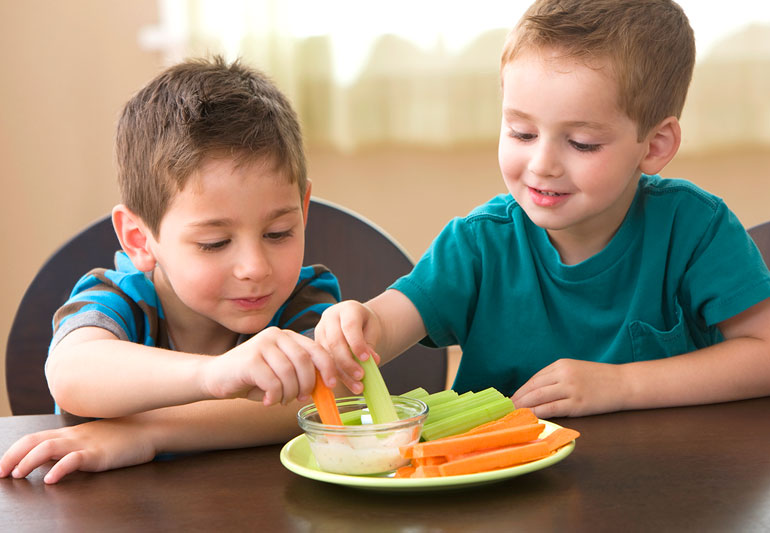
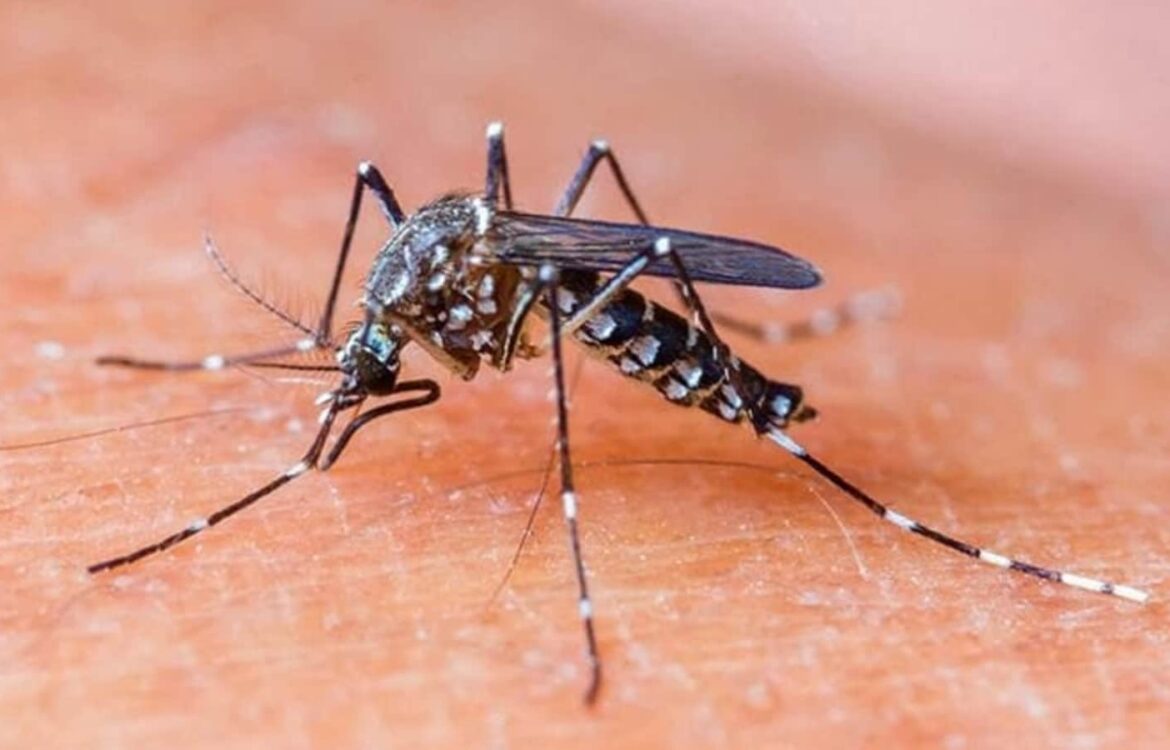
 SYMPTOMS OF DENGUE FEVER
SYMPTOMS OF DENGUE FEVER